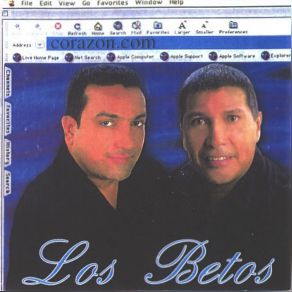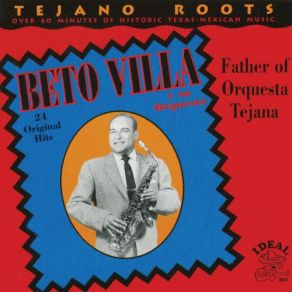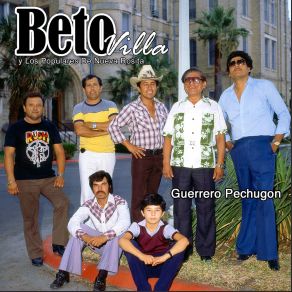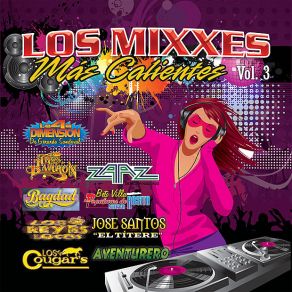Beto Villa
Wikimp3 information about the music of Beto Villa. On our website we have 24 albums and 10 collections of artist Beto Villa. You can find useful information and download songs of this artist. We also know that Beto Villa represents Latin genres.
Biography
[Edit]The father of this historic Texas musician was a tailor and by the time he was established in this profession, he obviously never had to search for the eye of a needle. But it surely wasn't that easy the first time he tried sewing, just as his son, Beto Villa, had to go on a search of his own before discovering what his real musical destination would be. He got his first saxophone at the age of 10 and began playing in school bands two years later. When he organized his first band in 1932, the group was playing American big band music and was named the Sonny Boys. His father had not been just any old tailor; his business had prospered, and the family was quite well to do. A social dynamic was already established in Villa's consciousness that became an important part of what he developed in the genre of Tejano music. Villa became the first to create an artistic resource from what would become the newly forming musical interests of a new class of Tejanos.
When he was a young man, the Hispanic population of South Texas was beginning to somewhat share in the upward economic swing resultling from oil and gas discoveries and increased agricultural production in the lower Rio Grande Valley. Yet it was slow going at first. Villa was still in high school while the second World War intensified and had to wait until the hostilities settled before he could really get a career break. By 1946, he had ditched the Anglo big band music and was trying to blend aspects of that style with the traditional Mexican genre known as "musica ranchera" or ranchera. This was a musical style that had been developed by the Mexican mariachi bands and the subsequent conjunto ensembles which became the most popular type of combo formation in the Southwest. The conjunto was traditionally a trio of stringed instruments and vocals; however, the upwardly mobile class of shopkeepers, doctors, lawyers, and other professionals was beginning to desire something more grand, complete with the type of instrumental flourishes heard on the radio. Villa's blend of these traditions with jazz and German dance band styles sounded sophisticated, and was. It became associated with the upper-class city dwellers who wanted to appear as if they were part of the American mainstream. The heavy Latino influence on the music at the same time kept this audience from feeling as if they were turning their back totally on their own ethnic background. This realization was part of this bandleader's genius, as he realized that the Latino listener would always enjoy a shot of ranchero music if it was played by his new style "orquesta." Two young record company moguls, Armando Marroquín and partner Paco Betacourt, heard the totally original new ranchera direction of Villa and heard some potential for their Ideal label. They also seemed to have heard things they didn't like as well, since they apparently felt the orchestra wasn't professional enough to record and needed fine tuning. The bandleader was even forced to cover his own production costs by the time the reluctant label honchos finally decided to cut some sides with Villa in 1947. A polka, entitled "Las Delicias," and a waltz, entitled "Porque Te Ries," were the songs on this very first release. Villa would go on to record more than 100 such pieces. The label might have moved slowly in the beginning, but Villa's first release was such a smash that follow-ups were wanted for yesterday. He released a string of hits, including favorites such as "Monterrey," "Las Gaviotas," "La Picona," and "Tamaulipas." These titles all help form the backbone of the modern Tejano orchestral repertoire. Another hugely popular recording was his collaboration with conjunto grandpa Narciso Martinez, "Rosita Valse."
By the end of the '40s, Villa began to concieve of enlarging the size of his orquesta. A new music-reading dynasty was established; in other words, any players who could not read music were canned. The leader restructured the band to include upwards of a dozen players, and headed for even more sophisticated arrangements that brought in aspects of styles that had absolutely nothing do with ranchera, including boleros, mambos, and even some American foxtrots. This was certainly one of the earliest globe-style groups. In 1954, Villa recorded with RCA, the first Tejano orquesta to achieve that level of national distinction. His popularity continued through the '50s but began to wane as a new generation of players began building popularity. Nonetheless, in the manner of many great musicians he personally felt his musical peak was in the '60s, despite the diminishing size of his audience. Certainly he played some of his best saxophone solos during that period, when Pérez Prado recruited him for membership in his Latin big band. Ill health forced Villa into early retirement, but he was able to enjoy the title of "Father of Tejano Orchestra Music" in his old age, and he probably preferred that to being described as "the Lawrence Welk of Mexico."
Title: Tejaño Roots: Father of Orquesta Tejana / Tejano Roots: Father of Orquesta Tejana
Artist: Beto Villa
Genre: Latin
Title: Frente a Frente
Artist: Beto Villa, Los Hermanos Barron, Los Populares De Nueva Rosita
Genre: Latin
Collections
Title: Vallenatos de Platino, Vol. 12
Genre: Latin
Title: South Texas Polka Party!
Genre: Latin
Title: Vallenatos de Platino, Vol. 1
Genre: Latin
Title: Homenaje A Gustavo Gutirrez (CD1)
Genre: Pop
Title: Best Of 2021꞉ Vallenato
Genre: Pop
Featuring albums
Title: Los Mixxes Mas Calientes Vol.3
Artist: Más / Mas, Los Reyes Locos, Zaaz Victor Hugo Ruiz, HERMANOS BARRON, LOS COUGARS, BAGDAD
Genre: Latin
Title: Vallenatos Románticos, Vol. 1 / Vallenatos Romanticos, Vol. 1
Artist: Various Artists
Genre: World Music, Latin
Title: Vallenato Romántico, Vol. 2 / Vallenato Romantico, Vol. 2
Artist: Various Artists
Genre: World Music, Latin
Title: Vallenato Romántico, Vol. 3 / Vallenato Romantico, Vol. 3
Artist: Various Artists
Genre: World Music, Latin











































